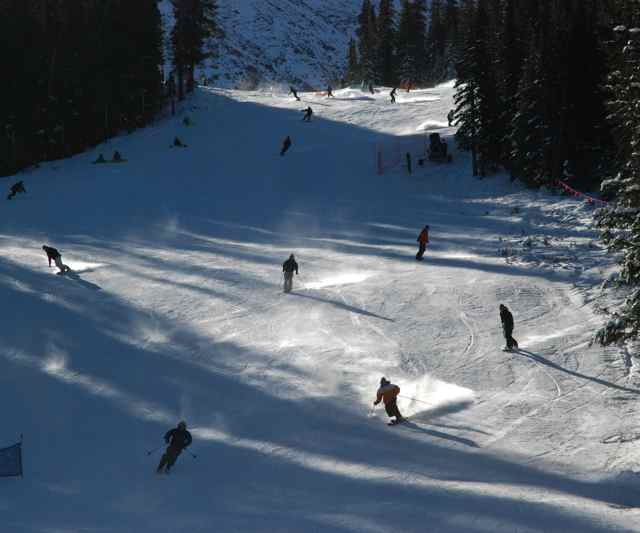 This year's early season snow notwithstanding, the ski industy acknowledges that global warming is a big threat to skiing. Warmer temperatures could shorten seasons and reduce snowfall at resorts around the country, with potentially devastating effects to an industry that accounted for $5.8 billion in direct spending last season.
This year's early season snow notwithstanding, the ski industy acknowledges that global warming is a big threat to skiing. Warmer temperatures could shorten seasons and reduce snowfall at resorts around the country, with potentially devastating effects to an industry that accounted for $5.8 billion in direct spending last season.
That's why the National Ski Areas Association last week highlighted the fact that 115 ski areas around the country have endorsed the Climate Declaration issued this year by a coalition of leading U.S. companies called BICEP (Business for Innovative Climate and Energy Policy). The Climate Declaration calls upon federal policymakers to take action to address climate change, and states that addressing climate change is one of the greatest economic opportunities of the 21st century.
“Ski areas are proactive on the issue of climate change,” says NSAA president Michael Berry. “They take steps in their own operations to reduce their carbon emissions and recognize the benefits of uniting with other business interests in getting attention on this issue in Washington,” says Berry.
The annual report also highlights the industry’s Climate Challenge Program, a voluntary program for resorts to inventory, target and reduce their greenhouse gas emissions.
By 2020, when all of the targets established by Challengers have been completed, the resorts have comitted to reducing emissions by about 34 percent.
“These ski areas are leading by example both inside and outside the ski industry and deserve tremendous recognition,” Berry said.
The report also focuses on the Sustainable Slopes Grant Program, now in its fourth year of providing seed money to important ski area sustainability projects.
“We want to thank NSAA supplier members HKD Turbo of Massachusetts, Brendle Group based in Fort Collins, Colo., LeitWind, a division of Leitner Technologies, Colo., and California-based CLIF Bar & Co. for their longstanding support of this critical program that this year resulted in more efficient snowmaking systems, reduced energy use and watershed protection,” said Geraldine Link, NSAA public policy director.
Looking to the future, NSAA also announced in the report that its 2014 Winter Conferences in Steamboat, Colorado and Mount Snow Vermont will feature a two-day environmental education track that will cover the most pressing and current topics in the realm of sustainability. Topics will include the Economics of Sustainabiltiy, Sustainability Branding and Communication, Environmental Regulatory Compliance, the business case for Climate Change Action and Advocacy, and Efficient Snowmaking and Sustainable Operations.
NSAA also welcomed two new Partnering Organizations to the Sustainable Slopes program this year, Audubon International, a leading environmental education organization dedicated to responsible management of land, water, wildlife, and other natural resources, and the Forest Stewardship Council, a third-party certifier of forest products.
Finally, the report details the latest environmental projects and programs at ski areas across the country including lighting improvements, electric vehicle use, composting, local purchasing programs, water conservation efforts, and employee and guest education as it relates to sustainability.
More than 190 resorts endorse the association’s Environmental Charter, and those resorts represent about 75 percent of the ski industry’s annual skier and snowboarder visits.
The report additionally recognizes the winners of the Golden Eagle Awards for environmental excellence. This year’s winners include Killington Resort in Vermont, Greek Peak in New York, Alta, Brighton, Snowbird and Solitude Ski Areas in Utah, and Homewood Ski Area in California.
To access the 2013 Sustainable Slopes Annual Report, click here.
Filed in Colorado News | Environment |